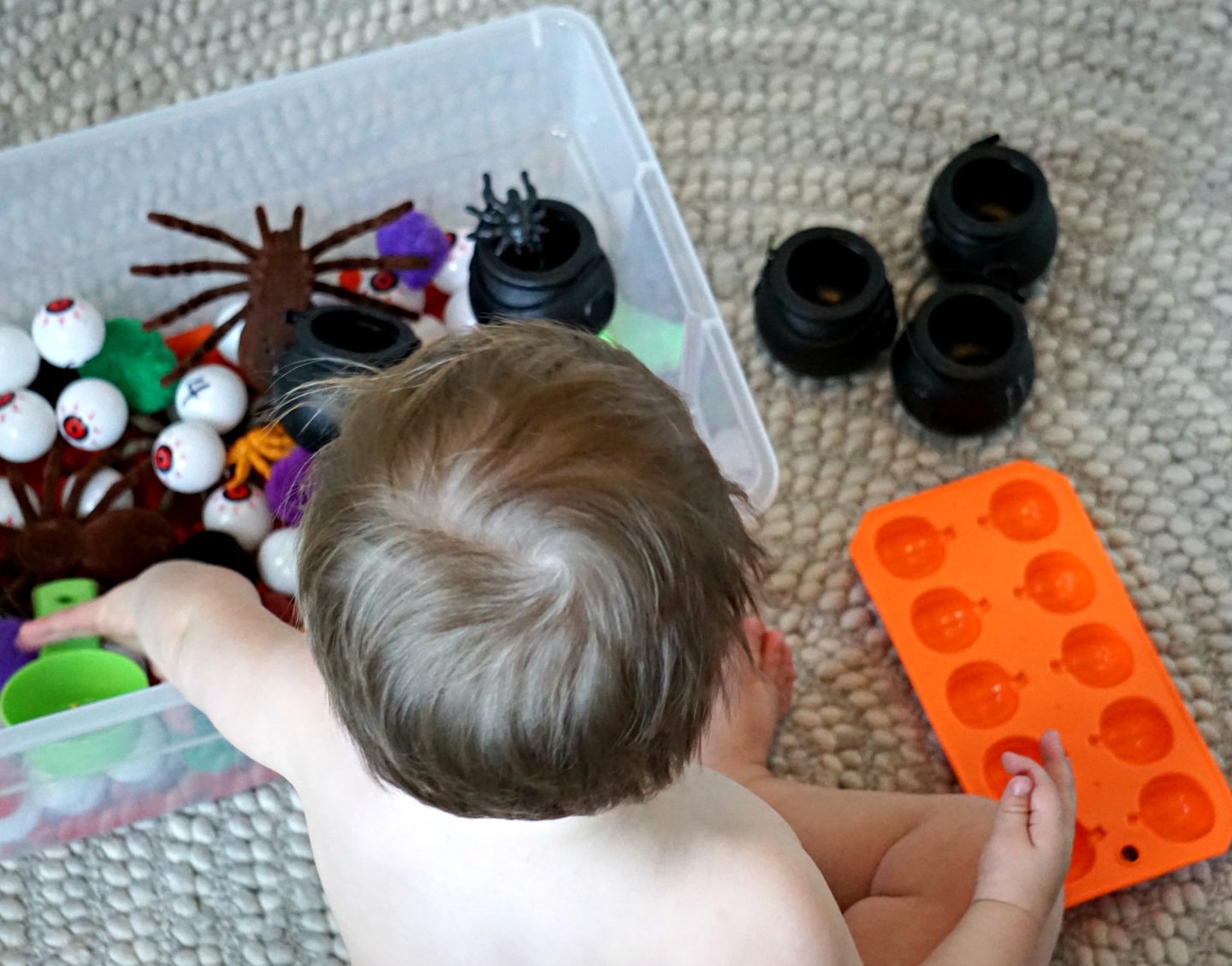
Grady’s curiosity and his attention to detail has me all excited to start sensory bins with him. They are huge in Pre-K and Kindergarten classrooms and my students would always get so overjoyed when I brought out a new box. Why couldn’t I make one for my baby to explore? Considering how he was still putting things into his mouth, I knew I had to make them baby friendly. Interested in making your own? Confused as to what a sensory bin is?
What is a sensory bin?
A sensory bin is a tub filled with materials and objects carefully selected to stimulate the senses.
What is the point of a sensory bin?
- develop fine motor skills by using their hands to interact with materials in a variety of textures, shapes and sizes
- develop cognitive skills by counting, measuring, organizing, matching, labeling, sorting, etc.
- develop language skills by attaching words to objects and using conversation to describe the pieces
- captures children’s attention and engages their minds
- foster’s creativity since there are no set rules on how to use a sensory table
I could go on, but you get the idea, right? Since we were just starting with “Baby Bins” I knew I needed to keep the objects to a minimum (don’t want to overstimulate) but I also knew I needed to make sure the materials were large so he wouldn’t swallow them. Below are the items I chose for his October Baby Bin.

- candy mold (Notice it’s in a ten frame. When I taught Kindergarten forever ago, we used them to count. I labeled the eyeballs with numbers 1 through 10 and they would have to place them in order in the mold. Grady’s not there yet, but that is an option for older babies.) I got the molds at Dollar Tree.
- measuring Spoons from Dollar Tree (Great for your baby to practice fine motor and to also see what sizes he can and cannot pick up)
- colored Pasta (Directions on how to color your pasta HERE)
- mini Cauldrons (I found these at Publix YEARS ago and used them when I taught. I labeled the fronts of the cauldrons 1 though 10 and students had to put that many candy corns inside. Once again, Grady isn’t there yet but it’s an option if you have an older toddler.)
- giant Fuzzies from Micheal’s craft store (to mix up the texture and color in the bin)
- eyeballs for one to one correspondence
- scoops (measuring cups from Dollar Tree)
- Spiders of different sizes, colors and textures (I found some giant fuzzy spiders at Dollar Tree)
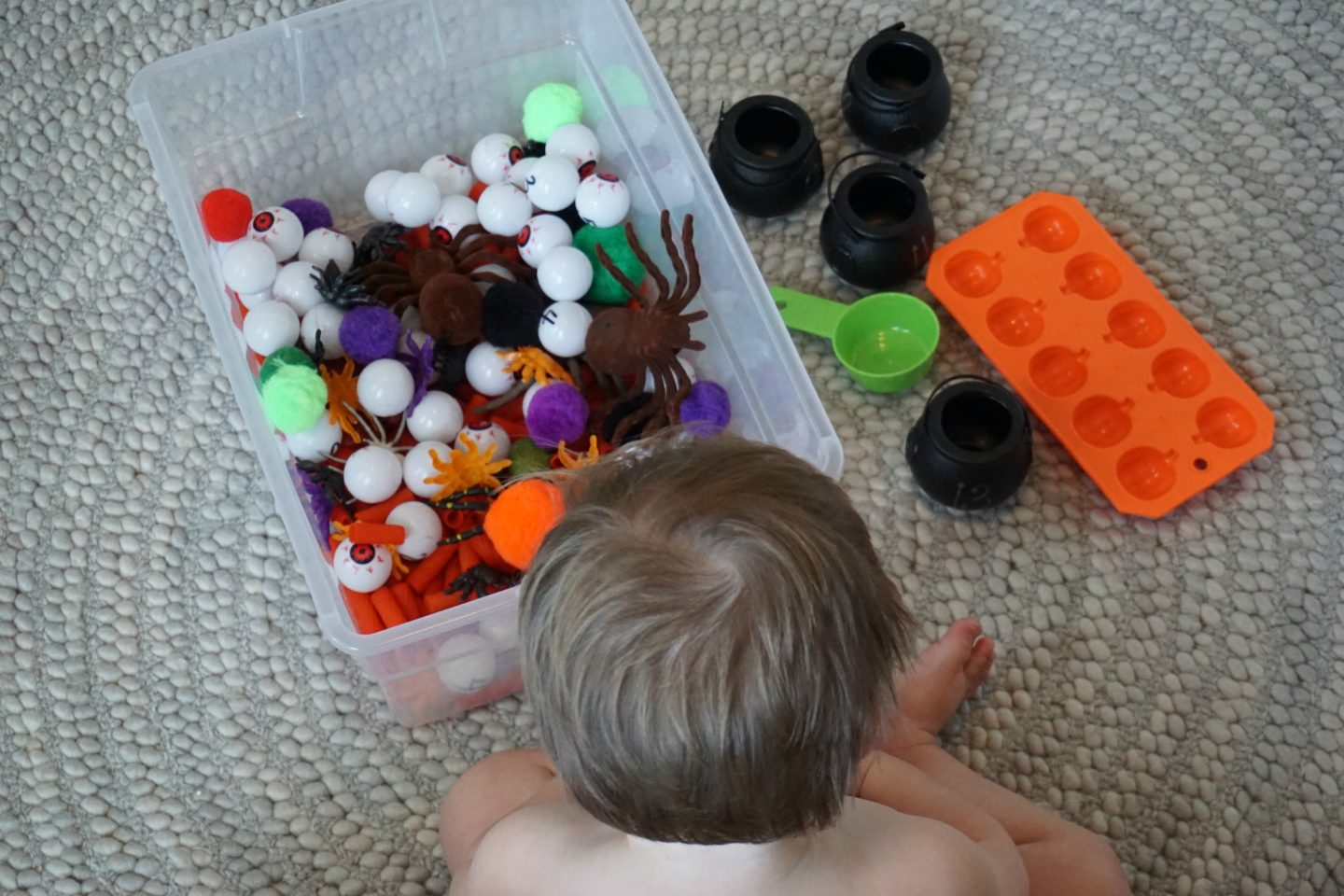
One of the things I notice with Grady is that he likes to stuff as many things as possible in the cauldrons. He wants to see what he can get in, and then he takes it all out. For babies, this is all about measurement and capacity. He can see that he can fit more of the fuzzies in the cauldrons than the eyeballs. Sometimes I let him explore by himself, sometimes I’ll sit down for a few minutes and talk to him about the pieces just to help develop vocabulary.
Just a side note, I know I probably should have changed my kid’s diaper and put a cute outfit on him for this post but then again, that’s just not real life.
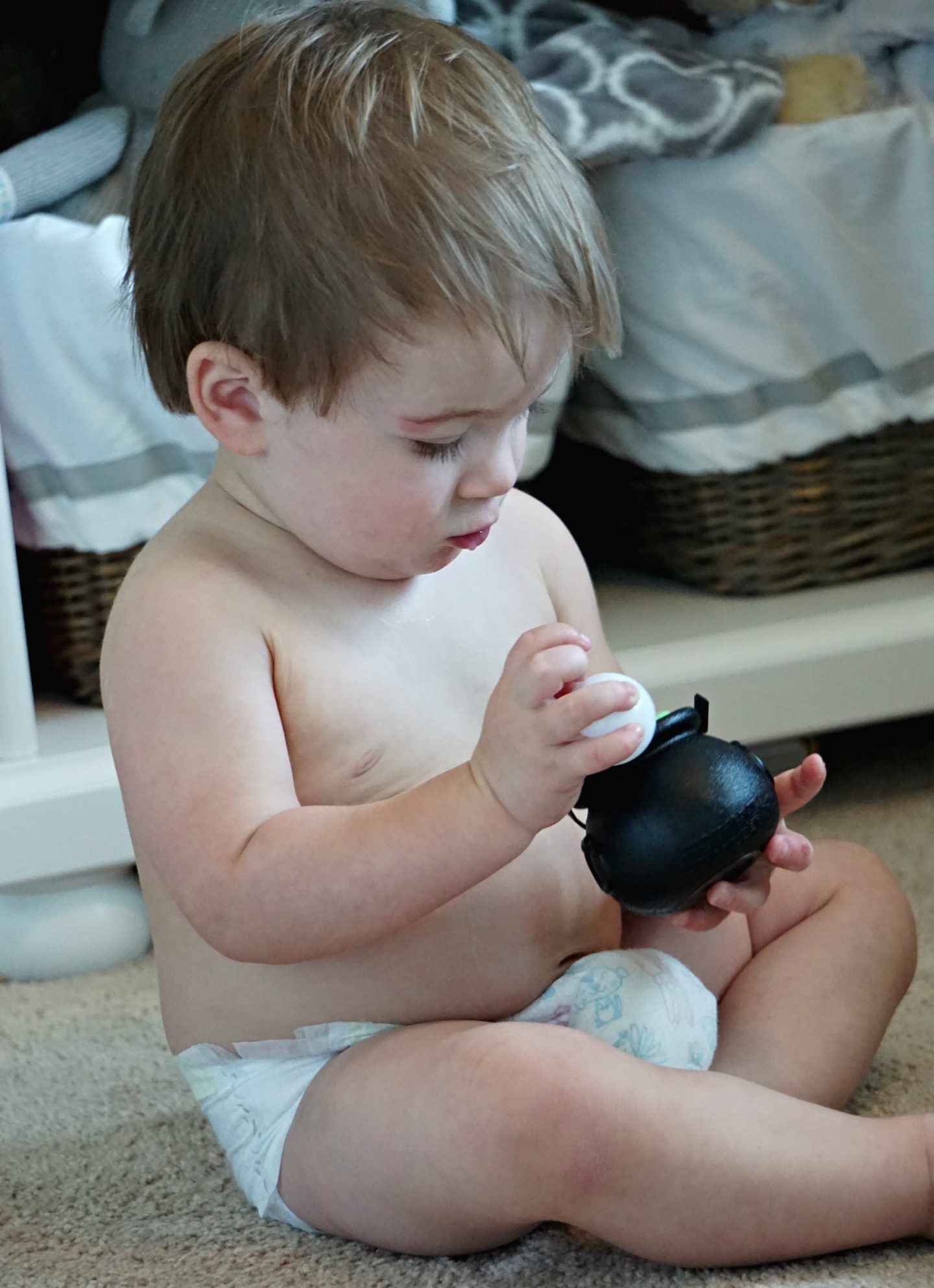

Grady notices that some things don’t fit into the cauldrons. Sometimes he’ll try a few times but eventually move onto something else.
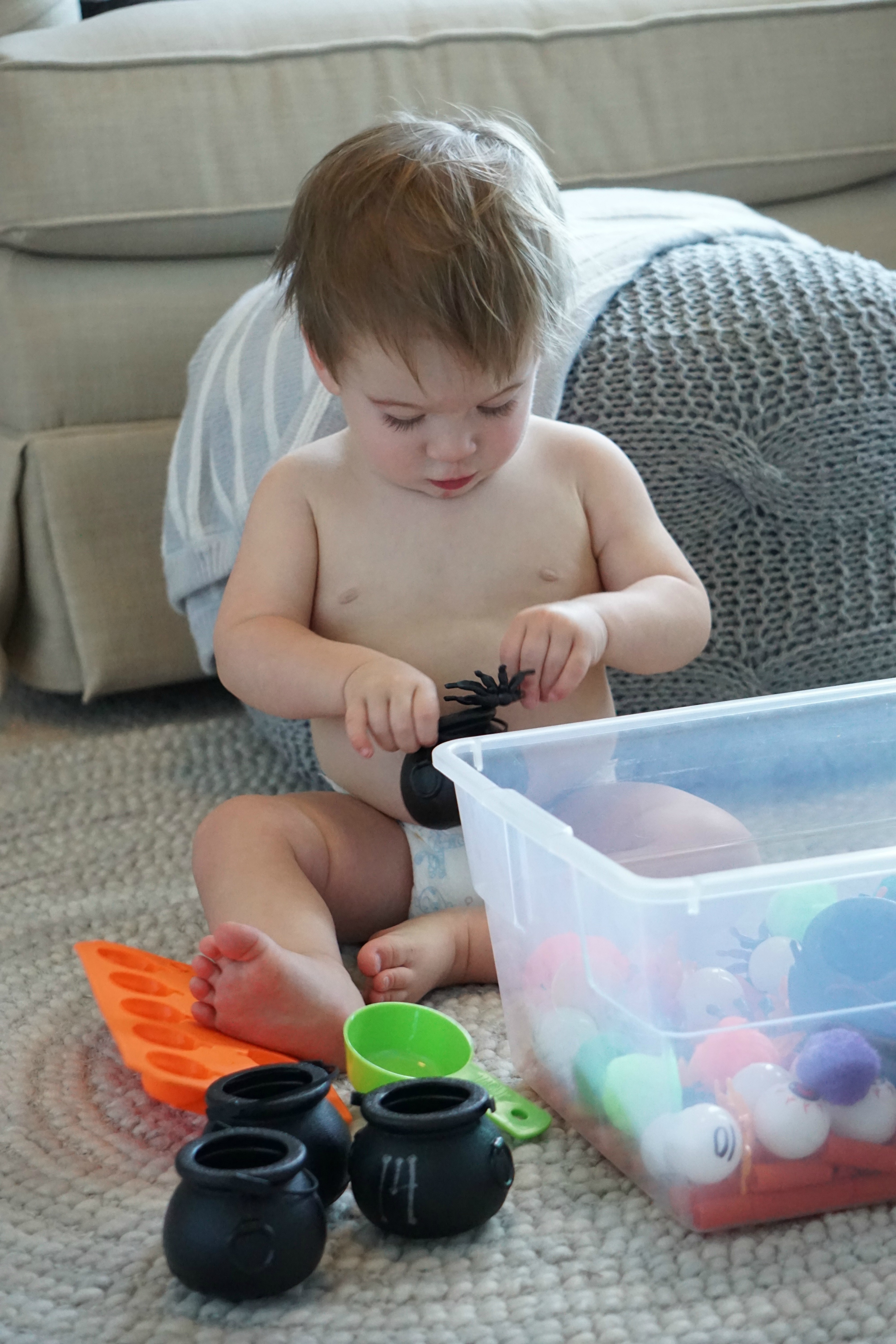
When he starts placing the eyeballs in the candy molds, I’ll usually start counting with him and pointing to each one. He doesn’t know how to count, but he also doesn’t know how to read and I still do that every night. It’s just something that I’m doing to help him develop those skills.
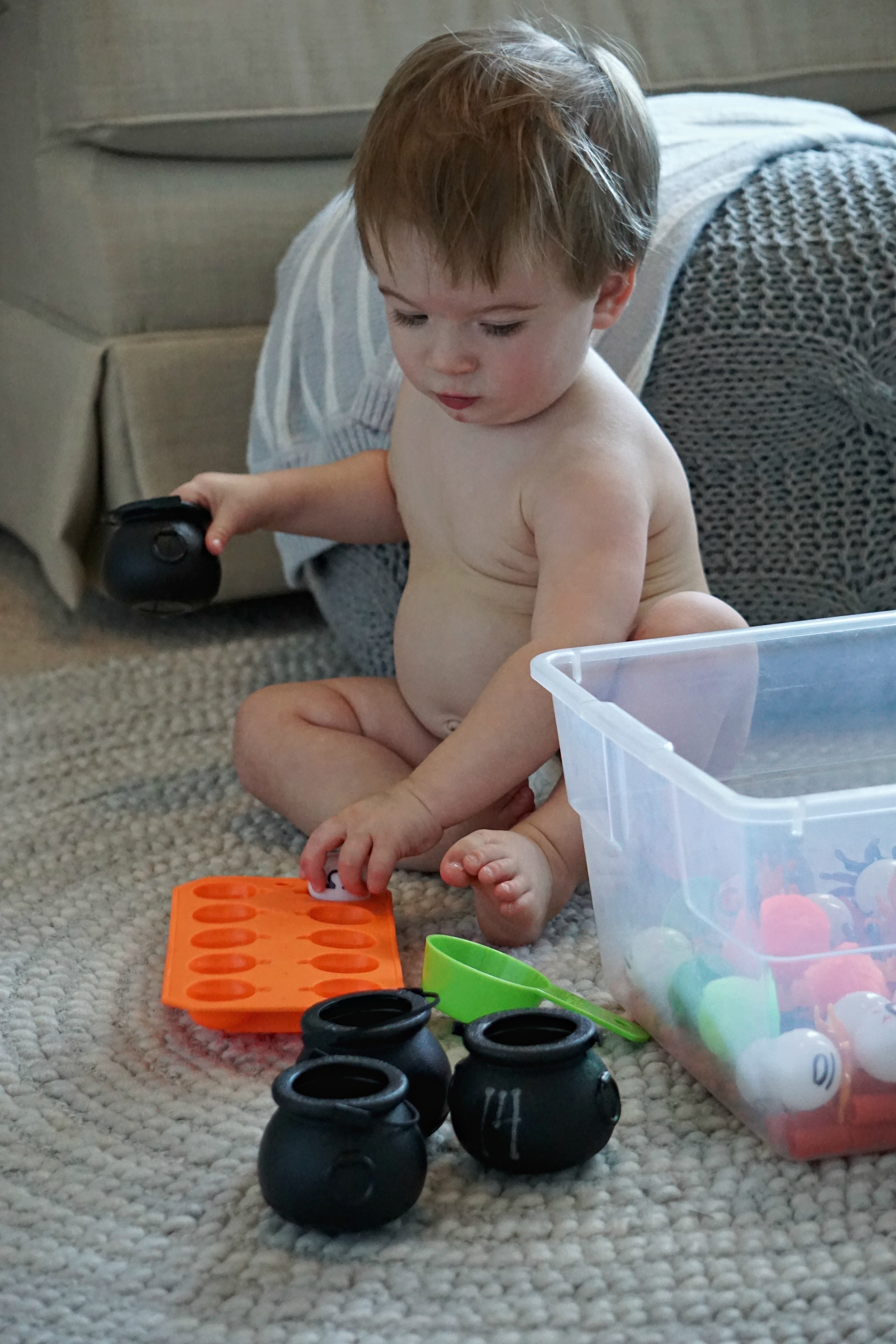
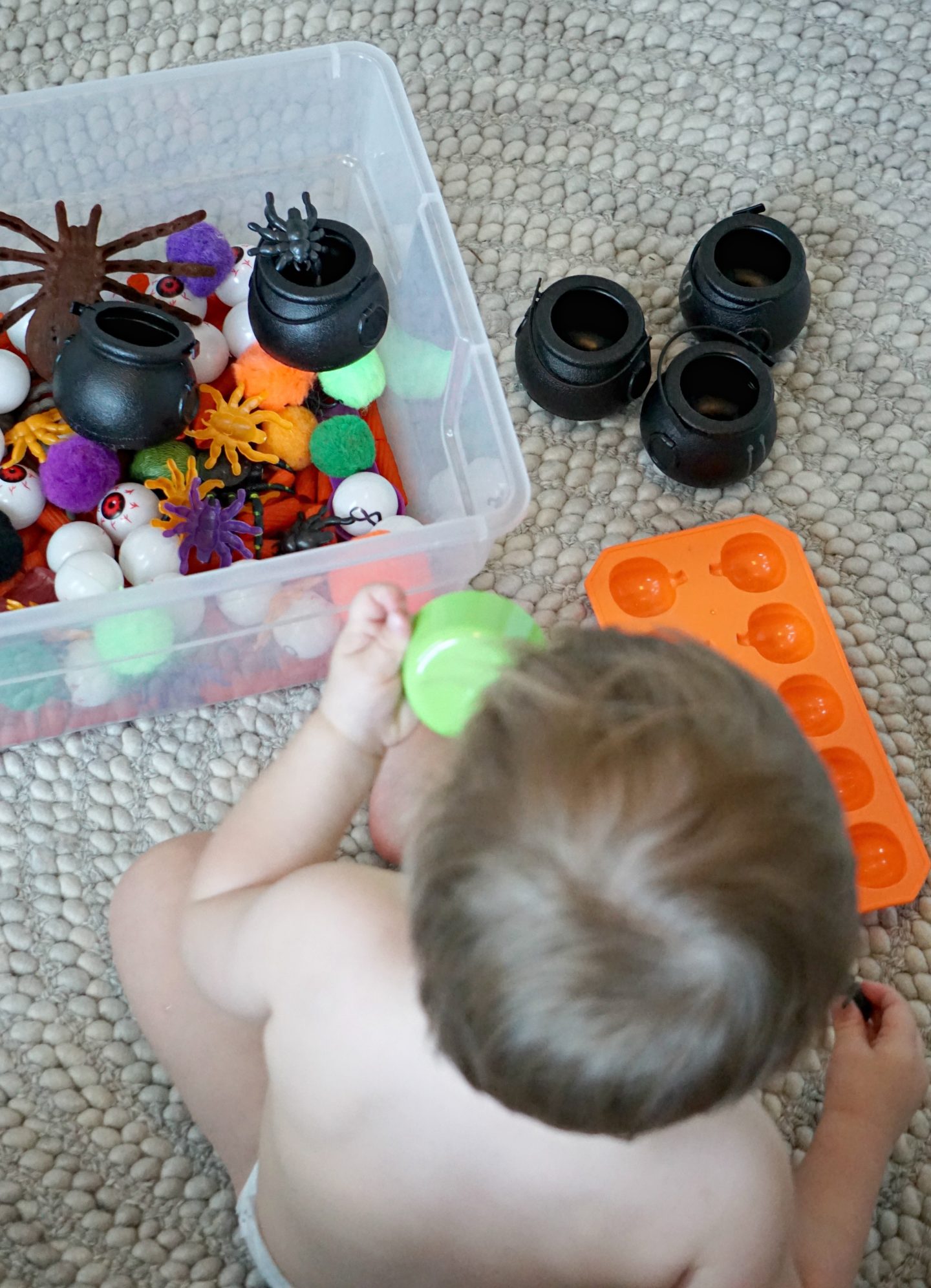
A few more things about Grady’s bin:
- As soon as I see him get bored, I put the lid on and put it in the closet until the next day or even a few days later.
- I keep it upstairs so that if I’m doing laundry or cleaning, he has something to do and I can keep an eye on him.
- I don’t leave the bin out and in plain sight, I offer it to him as a special treat. Otherwise, it loses its luster.
- Sometimes he wants to play with the bin, sometimes he doesn’t.
- Sometimes he’ll play for 30 minutes, sometimes 3. I don’t pressure him.
- Next month will be a new theme with new materials.
- As he gets older, I’ll add word cards to the bin for print concepts as well as some counting activities.
So there you have it! Super easy “Baby Bin!” Hopefully this will help you get started with your own sensory bin!
Happy Playing!
Ashley